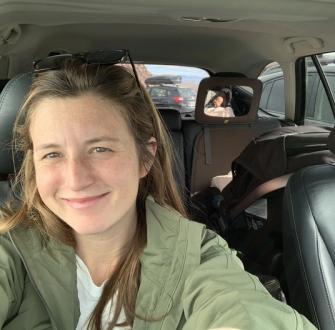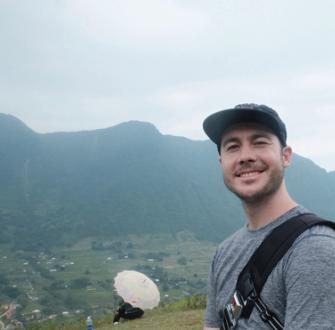Jeff Wheeler

Q: Where are you from?
I was born in Jefferson, Iowa when my Dad was in the Air Force, but moved to Spirit Lake, Iowa in the fourth grade. It’s located in the northwest part of the state near the Minnesota border in the midst of three large natural lakes and is a major tourist location for boating, camping, fishing and golf. The Sioux name for the area is Okoboji and it's infamous for a Santee Sioux raiding party led by chief Inkpaduta and the resulting massacre of white settlers in the winter of 1857.
Q: Where did you go to school?
Iowa state University in Ames. It was a very solid and practical program and not particularly weighted toward theory – it’s primarily an engineering school which probably has something to do with it. I particularly enjoyed architectural history, which continues to influence and inform my design aesthetic.
Q: Who is in your family?
We’re a pretty small family. I have one younger brother ten years my junior. Mom (Karen) and Dad (Danny) were high school sweethearts and married when they were 18, but tragically, we lost my Dad when I was 12. My mom remarried and her husband, Roger, has three kids of his own, their ages equally ranged between mine and my brother’s. Roger has a son named Jeff too, which was pretty funny and quite confusing to callers who had to specify which Jeff they wanted to talk to. Mom and Roger are still in Spirit Lake and most of my relatives live in central Iowa in and around Des Moines, but my brother eventually moved to California as well and lives in San Rafael with his wife Cyndi and their two dogs. Megan and I have been married for 23 years and our only son Cole is now 20. We have two Bernese Mountain Dogs, Stella and Ajax. Meg is the Director of Special Events at Marin Academy High School in San Rafael and Cole is a sophomore at Chico State. We live in funky little Fairfax in Marin County. Meg’s family is quite small as well and she is sixth generation Californian. Her Mom comes from a family of grape farmers in Lodi and her Dad is originally from West Virginia. Her older sister’s family lives in Fairfax too.
Q: When did you first develop an interest in architecture?
I used to deliver newspapers all around the Lakes in the summer and got to know all the cool, big houses of affluent families on West Okoboji – very much like Lake Tahoe, but with expanses of corn and soybean fields instead of pine trees and mountains – but there were also a lot of run down properties too, which I always wanted to rebuild. A high school aptitude test signaled architecture as a potential career path, even though I really had no idea at the time exactly what that entailed. But, I managed to make it through calculus and physics to graduate from ISU in the Spring of 1986. After a short stint drafting log houses in Wisconsin post-graduation, I packed up my Firebird and headed West for California. I consider myself lucky that I always pretty much knew what I wanted to do and was intrepid enough to leave the Midwest and pursue life on the Left Coast.
Q: What’s your favorite part about coming to work?
Every day is a new opportunity to solve another set of challenges, which are rarely the same one day to the next. Plus I love the layout of our office - it’s wonderfully conducive to thinking about and producing great architecture. I also get to spend a fair amount of time on numerous job sites, which is still as much fun now as it was the first time I set foot on one – there’s just nothing better.
Q: Do you have a professional role model?
There have always been many, not just one. Each past office experience has taught me specific lessons that molded me into the architect I am today. Famous architects whose work I gravitate toward all have a special way with elemental materials (stone, wood, glass, steel/aluminum and concrete) and how they go together to create a whole greater than the sum of its parts, which is what makes architecture so unique and incredibly satisfying as a profession. Tom Kundig, Peter Bohlin, James Cutler, Glenn Murcutt, David Samella and Lake/Flato are living examples that I admire. Other modern masters such as Lou Kahn, Jean Prouve, Rudolph Schindler and Richard Neutra are equally inspiring. They all demonstrate a great respect for the integrity of materials and how a building ages in place. I try to emulate their examples and think about how every material can be assembled in a lasting and pleasing way.
Q: What are five features you would include in your dream home?
It has to be in California, but that’s location, not a feature! Indoor/outdoor connection from living areas to patios and decks is a must have. Sustainable energy and water systems: solar panels, battery storage, graywater recycling and rainwater collection for irrigation, as well as fire resilient construction from non-flammable materials.


